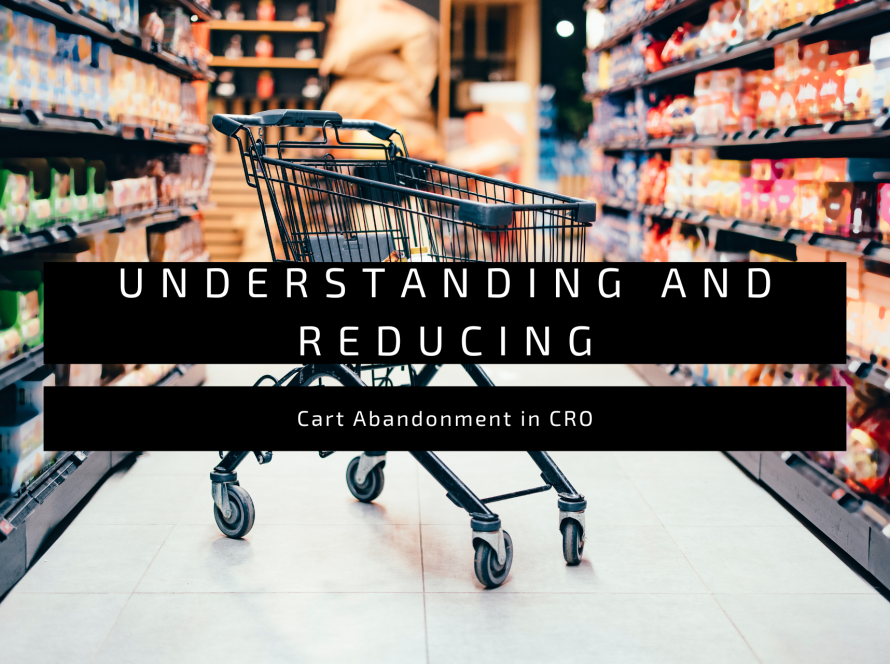The pivotal connection between your ecommerce website’s sales volume and a streamlined checkout process cannot be overstated. Research reveals that nearly 70% of potential buyers abandon their carts midway through the checkout, underscoring the critical need for an efficient Conversion Rate Optimization (CRO) strategy. This guide delves into essential techniques to streamline the ecommerce checkout experience, ensuring both seamlessness and the collection of necessary order-processing information.
Implementing best practices in ecommerce checkout can significantly enhance the user experience and improve conversion rates. Here are 11 recommendations:
1. Highlight Trust Signals
2. Optimize for Mobile
3. Utilize Checkout Process Bar
4. Diversify Payment Methods
5. Autofill Addresses
6. Incorporate Upsells/Cross-sells
7. Guest Checkout Option
8. Integrate Chat Support
9. One-Click CheckoutDiscount
10. Code Field Visibility
11. Transparent Pricing
1. Building Trust Through Clear Signals:
In the realm of online commerce, establishing trust is a cornerstone that extends beyond the initial purchase decision and permeates the entire checkout process. It’s imperative to consistently communicate to potential customers that your ecommerce platform is a secure and reliable guardian of sensitive payment details. This is where trust signals come into play.
These signals serve as tangible assurances to customers, reinforcing the credibility of your business in handling sensitive information, particularly credit card details. Here are examples of trust signals strategically employed throughout the online checkout journey:
- HTTPS Certificates: Display prominently to secure communication and signal data encryption.
- Customer Testimonials: Leverage positive feedback as social proof to build confidence.
- Influencer Endorsements: Showcase endorsements from trusted figures within your industry.
- Payment Processor Logos: Display logos of reputable processors for visual endorsement.
- Shipping and Returns Policies: Communicate transparent policies to build trust in business practices.
Strategically incorporating these trust signals not only reassures customers about payment security but also cultivates a positive perception of your ecommerce brand. Consistently reinforcing trust throughout the customer journey contributes to building lasting relationships and fostering brand loyalty.
2. Seamless Mobile Checkout Optimization:
Acknowledging the surge in mobile shopping trends, providing a seamless checkout experience on mobile devices is crucial. The key to achieving this lies in implementing responsive design and ensuring easy navigation.
- Responsive Design: Adapt the layout and functionality to various screen sizes, ensuring a visually appealing and user-friendly checkout process.
- Easy Navigation: Streamline the checkout process with a clean, organized layout and minimize unnecessary steps for a smooth user experience.
- Prioritize Critical Information: Given limited screen space, ensure essential details such as product information, pricing, and the checkout button are easily accessible.
By prioritizing responsive design and easy navigation in the mobile checkout experience, you cater to the trend of mobile shopping, enhancing customer satisfaction and potentially boosting conversions and brand loyalty.
3. Streamlining with Checkout Process Bar:
An effective practice in optimizing the checkout process is the removal of unnecessary form fields. Research indicates that a streamlined checkout flow not only expedites the process but persuades approximately 27% of individuals who might have abandoned their carts to proceed with their purchase.
4. Diverse Payment Methods for Enhanced Conversion:
Customers greatly value having a variety of payment options. A substantial 70% may abandon the checkout process if their preferred payment method isn’t available.
- Shopping Apps: Seamlessly integrate with popular apps like Amazon Pay.
- Credit or Debit Cards: Support traditional payment methods catering to a broad spectrum of users.
- Buy Now, Pay Later Options: Integrate flexibility with options like Shop Pay Installments.
- Digital Wallets: Facilitate swift and secure transactions with services like Apple Pay, Samsung Pay, or Google Pay.
Offering a comprehensive range of payment options aligns with diverse customer preferences, significantly reducing the likelihood of cart abandonment.
5. Autofill Addresses for Efficiency:
Efficiency in the checkout process is crucial. Utilizing Google Autocomplete accelerates the process by automatically filling in billing and shipping addresses, saving time and minimizing errors.
By integrating Google Autocomplete, you enhance transaction speed and overall customer experience, meeting the modern consumer’s expectation for convenience and efficiency.
6. Strategic Upsells and Cross-sells:
Integrating upsells and cross-sells into your ecommerce strategy can significantly enhance sales performance. This involves strategically recommending additional or complementary products.
- Increased Average Order Value (AOV): Encourage customers to add more items to their cart, boosting the average order value.
- Enhanced Customer Experience: Demonstrate a personalized approach, fostering satisfaction and loyalty.
- Maximized Revenue Potential: Tap into the potential for higher-priced items, maximizing revenue opportunities.
To successfully implement upsells and cross-sells, strike a balance between relevance and respecting customer choices, ensuring clear communication and a user-friendly interface.
7. User-Centric Guest Checkout Option:
Approximately 25% of individuals abandon their shopping carts due to mandatory account creation. To mitigate this, offer alternatives such as a guest checkout option or social media account login.
These user-centric approaches reduce cart abandonment and provide a seamless, personalized shopping experience.
8. In-Checkout Live Chat Support:
For customers with lingering concerns, in-checkout live chat support addresses questions or uncertainties. This personalized approach offers real-time assistance, enhancing confidence and guiding users toward completing transactions.
9. One-Click Checkout for Efficiency:
Streamlining the ecommerce checkout process with one-click checkout options, such as Google Pay, expedites transactions and enhances user convenience.
10. Code Field Visibility:
Concealing the discount code field behind a dropdown balances promotional needs with a smooth checkout process, reducing friction and optimizing conversion rates.
11. Pricing:
Transparency in pricing is crucial, as 55% of online shoppers abandon carts due to high additional costs. Communicate additional costs proactively, ensuring clarity and preventing surprises.
Importance of Ecommerce Checkout
The ecommerce checkout stands as a pivotal element of your website, marking the conclusive touchpoint before a customer finalizes a purchase. While optimizing various facets of your online store is essential, ranging from the homepage’s initial impression to informative product pages, the checkout phase is particularly critical, often determining whether customers proceed or abandon their purchase.
To prioritize the customer experience during checkout, several key considerations come to the forefront:
- Diverse Payment Options: Ensure customers have an array of payment choices, accommodating various preferences and boosting the likelihood of transaction completion.
- Checkout Design: Concentrate on a clean, easily navigable checkout design that aligns with your brand, devoid of unnecessary clutter. A well-designed checkout page enhances user experience and builds trust.
- Upselling Opportunities: Seize the chance to upsell by suggesting complementary items, enhancing the overall shopping experience and potentially increasing order value.
- Shipping Savings Reminders: Prompt customers about potential shipping savings based on their cart value, motivating them to explore additional products for discounted or free shipping.
- Friction-Free Experience: Eliminate unnecessary friction, such as redundant form fields, to create a smoother and more efficient checkout process, reducing the likelihood of cart abandonment.
- Mobile Checkout Optimization: Ensure a seamless mobile checkout experience, acknowledging the growing trend of mobile shopping and catering to users on various devices.
- Clear Order Confirmation: Provide detailed order confirmation information, including options for tracking or modifying an order, instilling confidence in customers about their purchase.
- Shipping Details Transparency: Communicate shipping details for every available option, offering transparency and setting customer expectations regarding delivery.
In conclusion, the ecommerce checkout process holds paramount importance as the ultimate touchpoint before a customer commits to a purchase. While optimizing various elements of an online store is crucial, the checkout phase is where customers make the critical decision to proceed or abandon their shopping journey. Prioritizing the customer experience during this phase involves providing diverse payment options, ensuring a clean and navigable checkout design, seizing upselling opportunities, reminding customers of potential savings, creating a friction-free experience, optimizing for mobile users, offering clear order confirmations, and providing transparent shipping details.
By addressing these key considerations, ecommerce businesses can not only increase the likelihood of completing transactions but also contribute to an overall positive customer experience. A seamless and customer-centric checkout process fosters trust, reduces cart abandonment rates, and enhances satisfaction, ultimately building a strong foundation for customer loyalty and the success of the online store.



